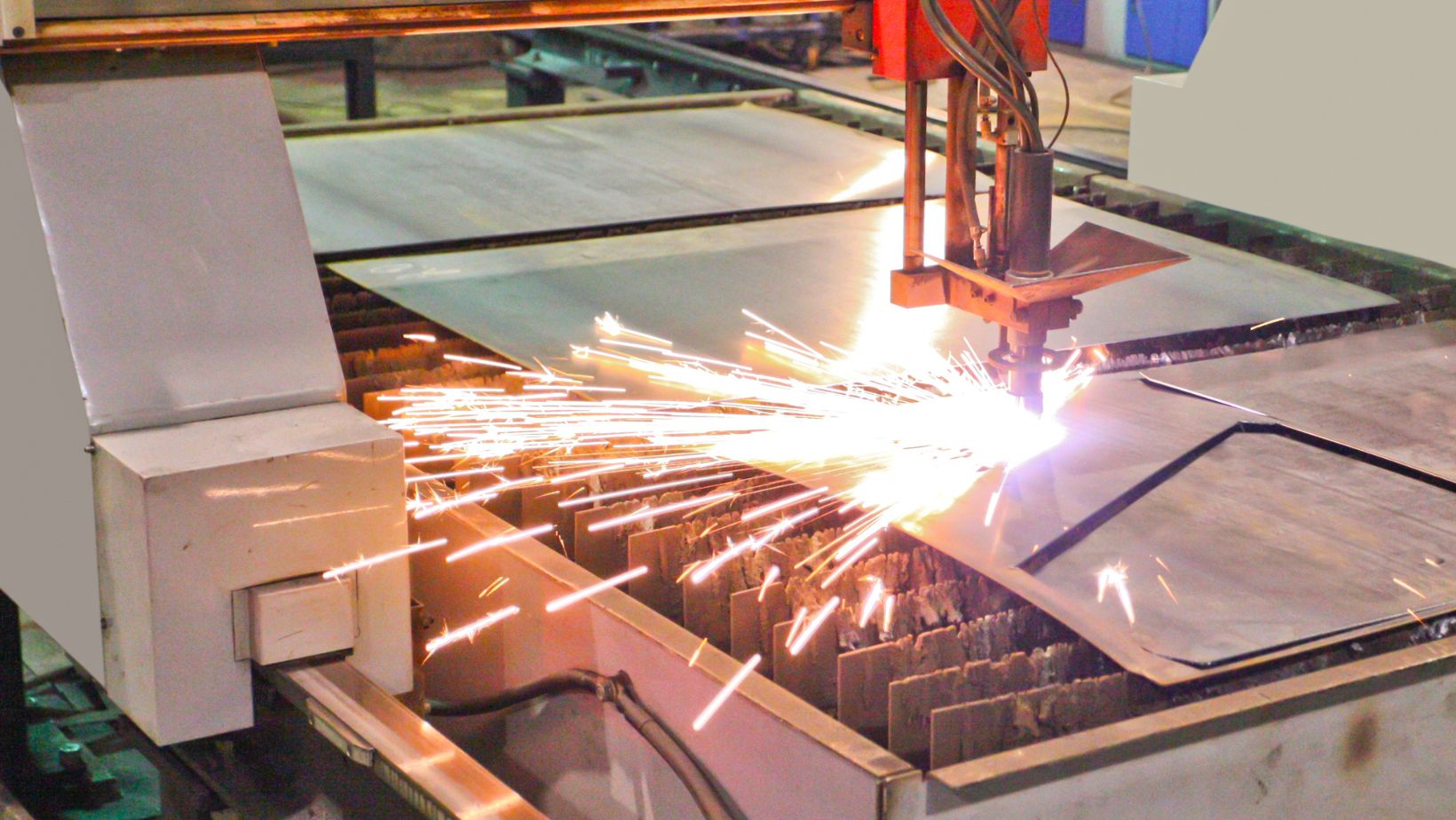Metal cutting is an essential process in many industries, from manufacturing to construction. Two of the most common thermal cutting methods are oxyfuel and plasma cutting. Both utilize extremely high temperatures to melt metal so it can be cut. However, there are key differences between the two processes that impact cut quality. This article will examine six factors that affect cut quality and compare oxyfuel and plasma cutting.
Cut Surface Finish
A key indicator of cut quality is the surface finish left behind on the cut edge. Plasma cutting typically produces a smooth finish requiring little secondary cleanup. The high-temperature plasma stream melts a narrow zone around the cut, leaving behind a sharp edge. Oxyfuel cutting can leave behind a rougher surface finish as the broader preheat flames and high-velocity oxygen-cutting jet melt a wider area around the cut. The result is often more slag and oxidation attached to the cut edge, which must be removed with grinding or other secondary finishing. For applications where an attractive cut-edge appearance is important, plasma will provide better results.
Cut Accuracy
The ability to make straight, precise cuts is another important cut quality factor. Plasma cutting generally provides superior cut accuracy compared to oxyfuel. The tightly concentrated plasma arc gives better directional control and stability as it cuts. This allows plasma systems to perform straight cuts more easily, even on thicker metals. Oxyfuel cutting depends on the operator’s skill to keep the cutting oxygen stream properly aligned as it cuts through the material.

It can be more difficult to compensate for factors like torch angle and flame wander. For applications requiring high cut precision, plasma cutting has the advantage.
Cut Speed
For any thermal cutting process, cut speed is an important consideration affecting quality. Faster cut speeds limit heat input, reducing the thermal distortion effects that can reduce accuracy on thicker metals. Plasma cutting provides extremely fast cut speeds, often multiple times faster than oxyfuel on the same thickness material. The concentrated plasma arc transfers energy very efficiently into the cut zone. Oxyfuel cutting is limited by the broader preheat flames needed to bring the entire cut area up to ignition temperature before the high-speed oxygen-cutting jet can penetrate. For thin materials under 1 inch, oxyfuel can match plasma cutting speed. However, as material thickness increases, plasma’s advantage in cut speed also increases.
Cut Thickness Capacity
The range of material thicknesses that can be cut is an important factor affecting cut quality. Plasma cutting has a much greater thickness capacity than oxyfuel cutting. Plasma can cut mild steel over 1 inch thick and stainless steel over 2 inches thick while maintaining high-quality cuts. Oxyfuel cutting is generally limited to under 1 inch thickness for mild steel and under 1/2 inch for stainless steel. The high plasma temperatures and efficient energy transfer allow it to cut much thicker materials than the preheat-dependent oxyfuel process. For thick metal cutting applications, plasma is by far the superior choice for quality results.
Cut Edge Squareness
Achieving nice, square-cut edges is a sign of high-cut quality. The narrower kerf and faster cut speed of plasma cutting results in less heat input to the metal. This minimizes the angular distortion effects along the cut edge that can occur with oxyfuel cutting. Oxyfuel’s broader preheat pattern and slower cut speed allow greater edge angle deviation before the cutting jet penetrates the material. For oxyfuel to match the edge squareness of plasma, slower cut speeds are required. When square edges are critical, plasma will consistently outperform oxyfuel.
Cut Quality Consistency
The complexity of oxyfuel cutting makes maintaining consistent cut quality more operator-dependent. There are more variables involved, like preheating levels, cutting oxygen flow rate, torch angles, and travel speed.

With plasma cutting, the automated systems and simpler processes provide more built-in consistency. The CNC-controlled plasma cutter handles the cutting variables, moving the torch at optimal speeds and angles throughout the cut. This automation results in high repeatability and uniform cut quality from one workpiece to the next. For applications that require minimal quality variation, plasma cutting offers clear advantages.
Conclusion
In comparing oxyfuel and plasma cutting, plasma is superior in nearly every factor affecting cut quality. The high energy density plasma arc melts metal quicker and more narrowly than oxyfuel flames. This gives plasma advantages in cut surface finish, accuracy, speed, thickness capacity, edge squareness and consistency.
However, oxyfuel does retain some advantages in lower equipment costs and portability. This makes it still well-suited for light, occasional cutting or field work where minimal secondary cleanup is acceptable. But for heavy production cutting that requires quality, precision, speed and consistency, plasma cutting offers major benefits over the oxyfuel process.
As metal-cutting technology continues advancing, hybrid cutting processes aim to combine the best aspects of plasma and oxyfuel. But for now, companies that want reliable, high-quality cuts in thick structural and fabrication metals will benefit most from utilizing plasma cutting in their operations. When cut quality matters, plasma remains the superior thermal cutting method.
